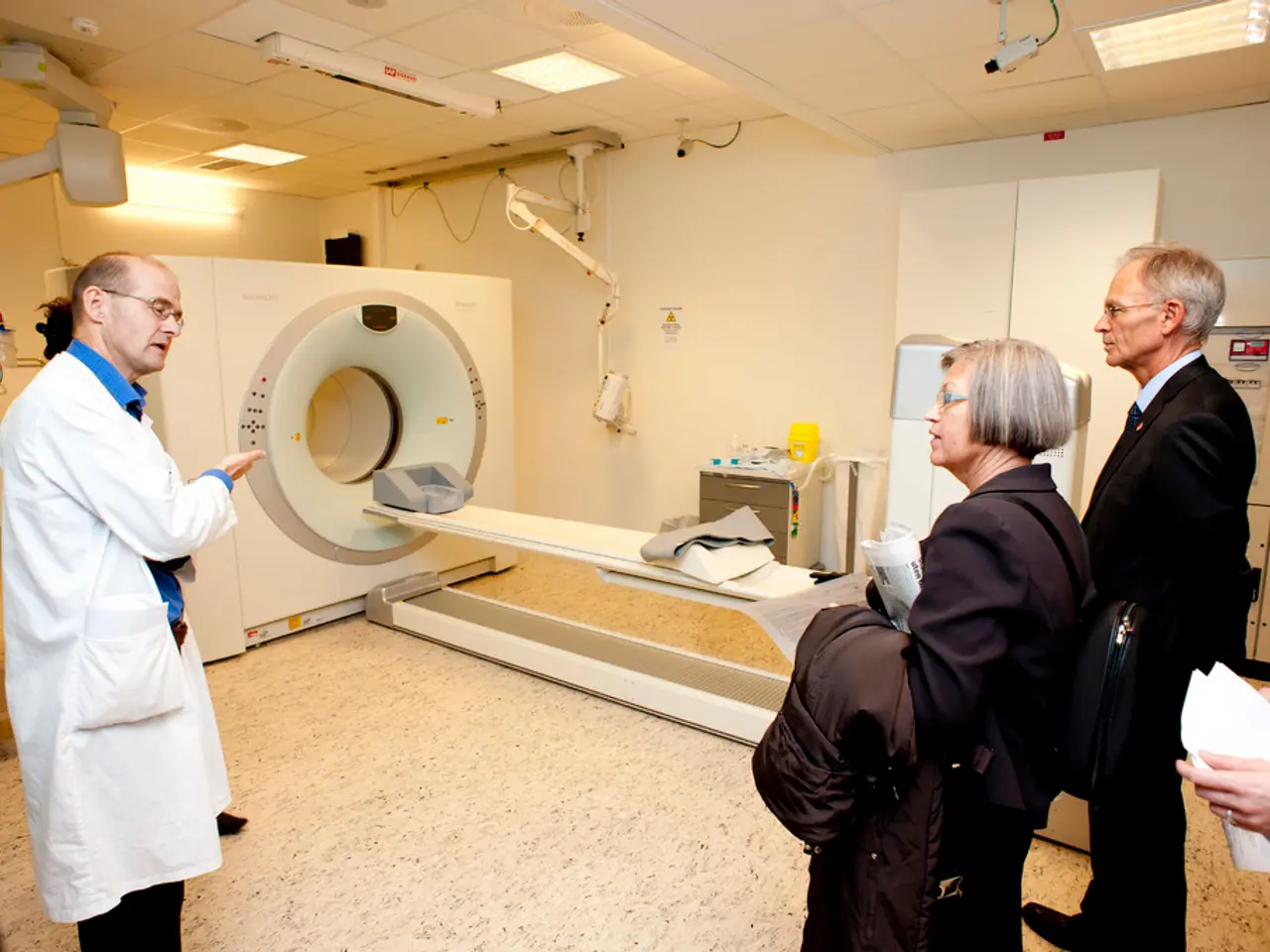Accuracy of Forehead Thermometers: A Discussion and Analysis Compared to Other Thermometer Types
In the realm of temperature measurement, forehead thermometers, particularly infrared (temporal artery) types, offer a minimal-contact, quick, and sterile solution, especially during the COVID-19 pandemic. However, their accuracy is influenced by various factors compared to other thermometer types such as rectal, oral, ear (tympanic), and armpit thermometers.
Key factors that affect the accuracy of forehead thermometers include measurement technique and environmental conditions, type of forehead thermometer, sensitivity and specificity, age and patient group, and maintaining the correct measuring distance.
Variability in how the thermometer is positioned on the forehead, ambient temperature, and sweat or dirt on the skin can affect readings. Temporal artery thermometers rely on infrared detection of the blood flow in the temporal artery, so improper positioning or external factors can reduce precision and accuracy.
Plastic strip thermometers that change color based on temperature are less accurate and considered unreliable for clinical use, whereas infrared forehead thermometers scanning the temporal artery provide more accurate results but are still less accurate than rectal measurements.
Temporal artery infrared thermometers have moderate sensitivity (60–70%) but very high specificity (97–100%) for detecting fever, implying they are better at confirming non-fever than detecting fever, making them less suitable for critical acute care settings.
Pediatric patients tend to have more accurate and precise readings with temporal artery thermometers compared to adults.
Comparisons to other thermometer types reveal that rectal thermometers are considered the most accurate for core body temperature and are the gold standard, especially in infants. Oral thermometers tend to underestimate body temperature by about 1 degree compared to rectal readings. Tympanic (ear) thermometers can both under- and overestimate temperature by about 1–2 degrees due to factors like ear canal shape and wax presence. Armpit (axillary) thermometers generally underestimate temperature by about 1 degree and are less recommended. Infrared forehead thermometers tend to underestimate or overestimate temperature by about 0.5 degrees compared to rectal thermometers, making them reasonably accurate but less so than rectal methods.
Additional practical aspects influencing forehead thermometer accuracy include the need to maintain the correct measuring distance (usually 0–5 cm) for infrared models and the avoidance of skin contamination to prevent errors.
In summary, forehead infrared thermometers are convenient, minimally invasive, and fairly accurate for screening fever, especially in pediatric care. However, their accuracy is influenced by technique, environment, and device quality, and they remain less precise than rectal thermometers. For general use at home, forehead thermometers will give an idea of whether or not an individual has a fever. However, for critical acute care settings or when accuracy is of utmost importance, rectal thermometers remain the gold standard.
[1] Mower WR, et al. Comparison of the accuracy of forehead, ear, and axillary thermometers with oral and rectal thermometers in children and adults. Pediatrics. 2002;109(2):242–248. [2] Kempers MH, et al. Accuracy of forehead infrared thermometers in paediatric patients: a systematic review and meta-analysis. BMJ Open. 2014;4(8):e005791. [3] American Academy of Paediatrics. Clinical Report—Thermometry. Pediatrics. 2015;136(1):e119–e130. [4] Mower WR, et al. Comparison of the accuracy of forehead, ear, and axillary thermometers with oral and rectal thermometers in children and adults. Pediatrics. 2002;109(2):242–248.
- While forehead thermometers offer minimal-contact, quick, and sterile solutions, their accuracy can be influenced by factors such as measurement technique, environmental conditions, and device type.
- Temporal artery thermometers, a type of forehead thermometer, rely on infrared detection and can be affected by improper positioning or external factors, reducing their precision and accuracy.
- Plastic strip thermometers, which change color based on temperature, are considered less accurate and unreliable for clinical use compared to infrared forehead thermometers.
- Rectal thermometers are considered the most accurate for core body temperature and are the gold standard, especially in infants, while oral thermometers tend to underestimate body temperature.
- Tympanic (ear) thermometers can both under- and overestimate temperature due to factors like ear canal shape and wax presence, and armpit (axillary) thermometers underestimate temperature and are less recommended.
- Infrared forehead thermometers tend to underestimate or overestimate temperature compared to rectal thermometers, making them reasonably accurate but less so than rectal methods.
- For critical acute care settings or when accuracy is of utmost importance, rectal thermometers remain the gold standard, whereas forehead thermometers are more suitable for general use at home to screen for fever.
- Studies show that pediatric patients tend to have more accurate and precise readings with temporal artery thermometers compared to adults, making them particularly convenient for pediatric care.




